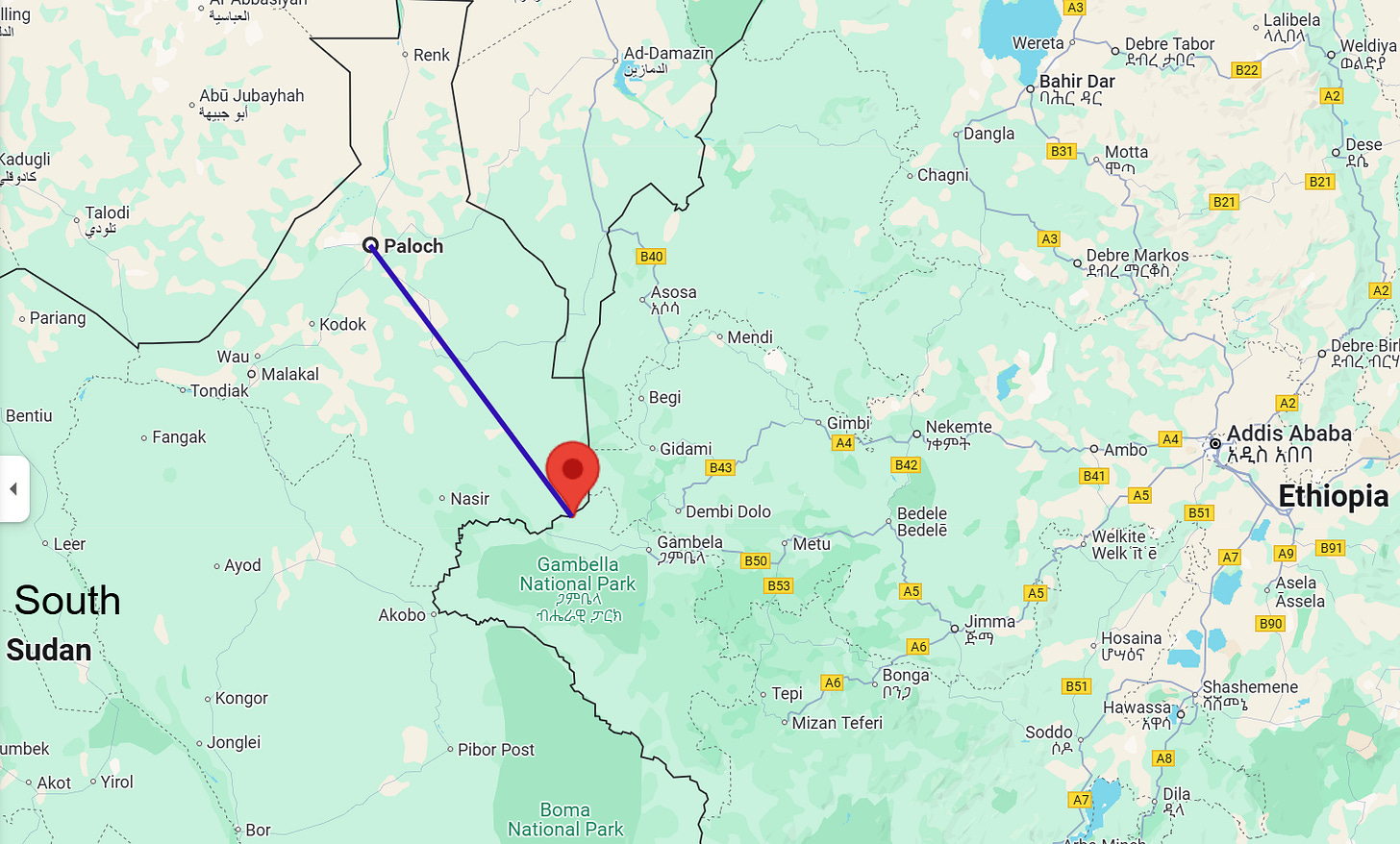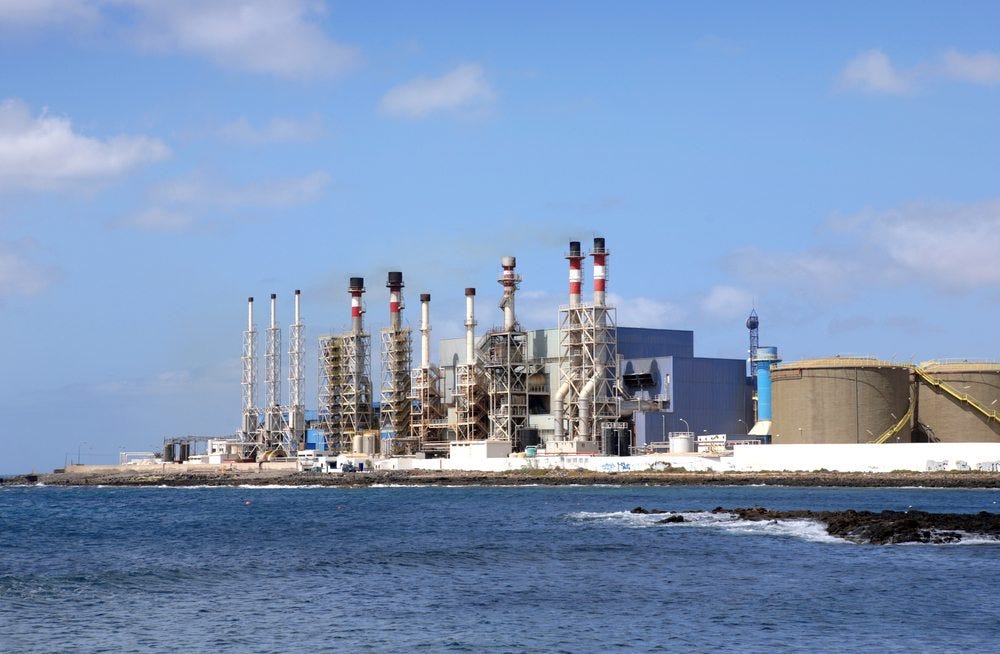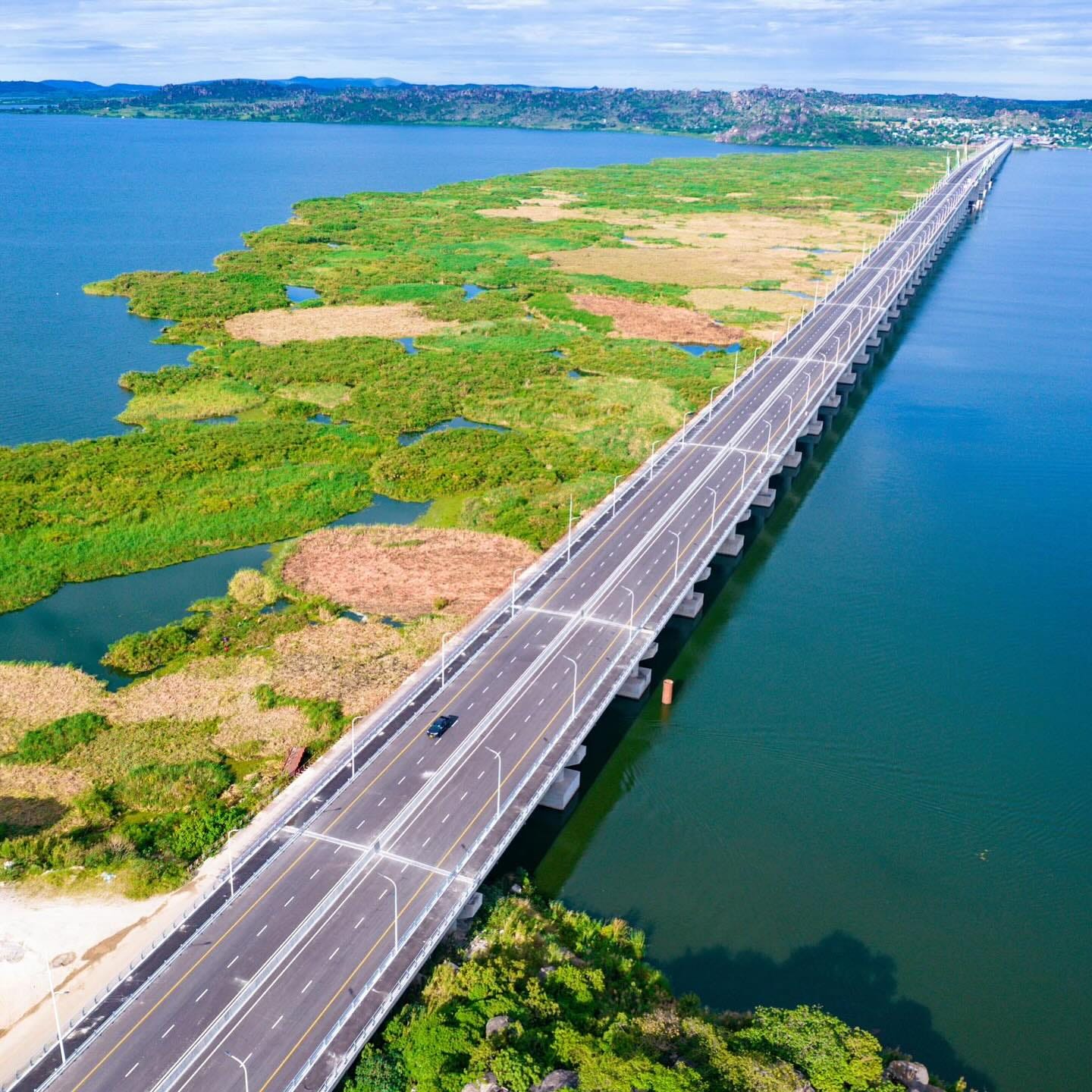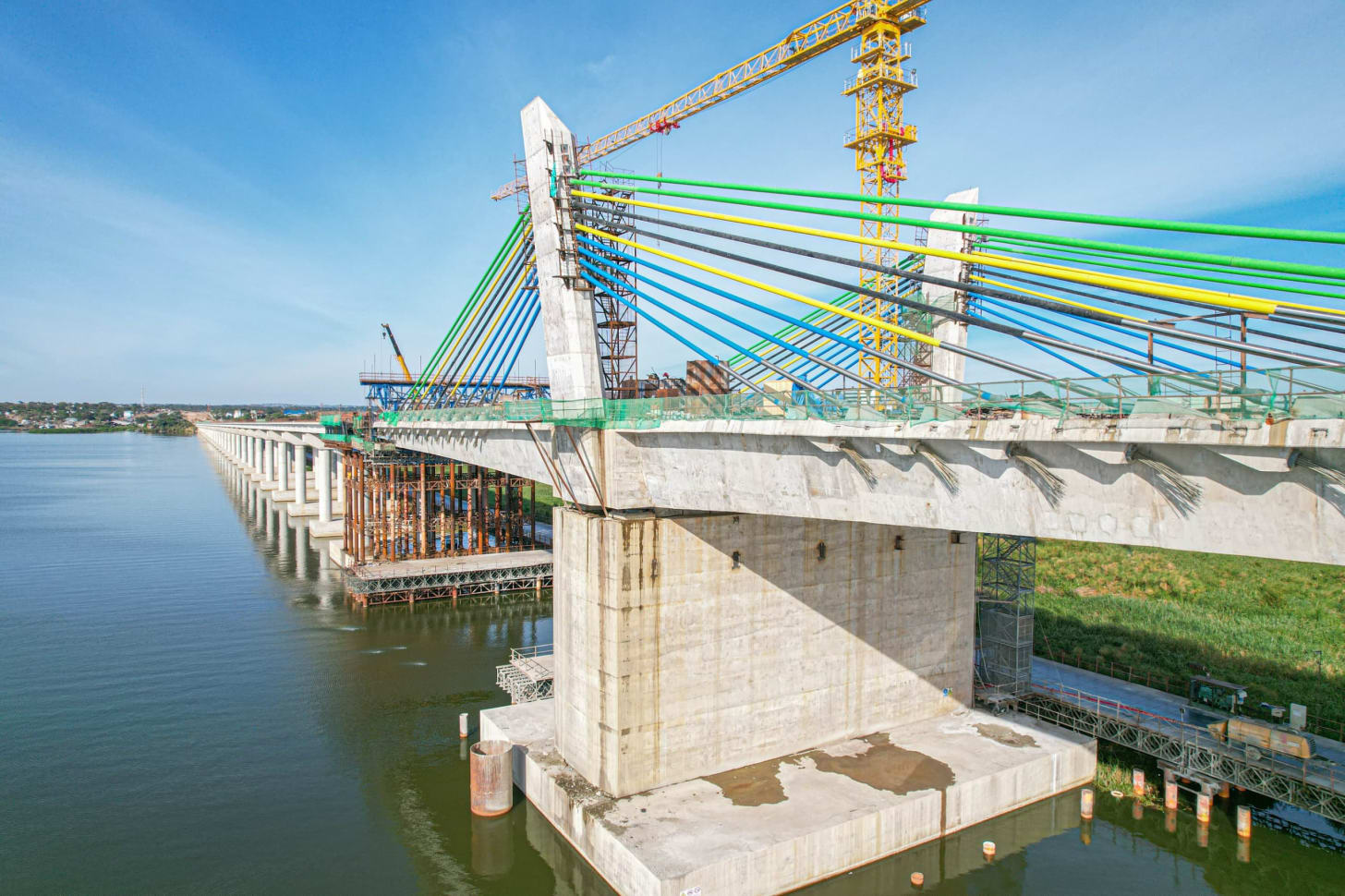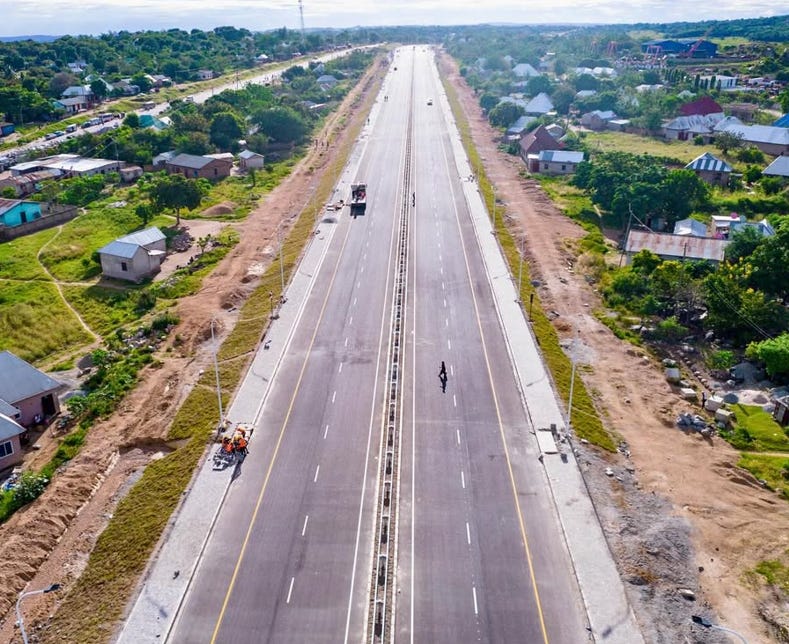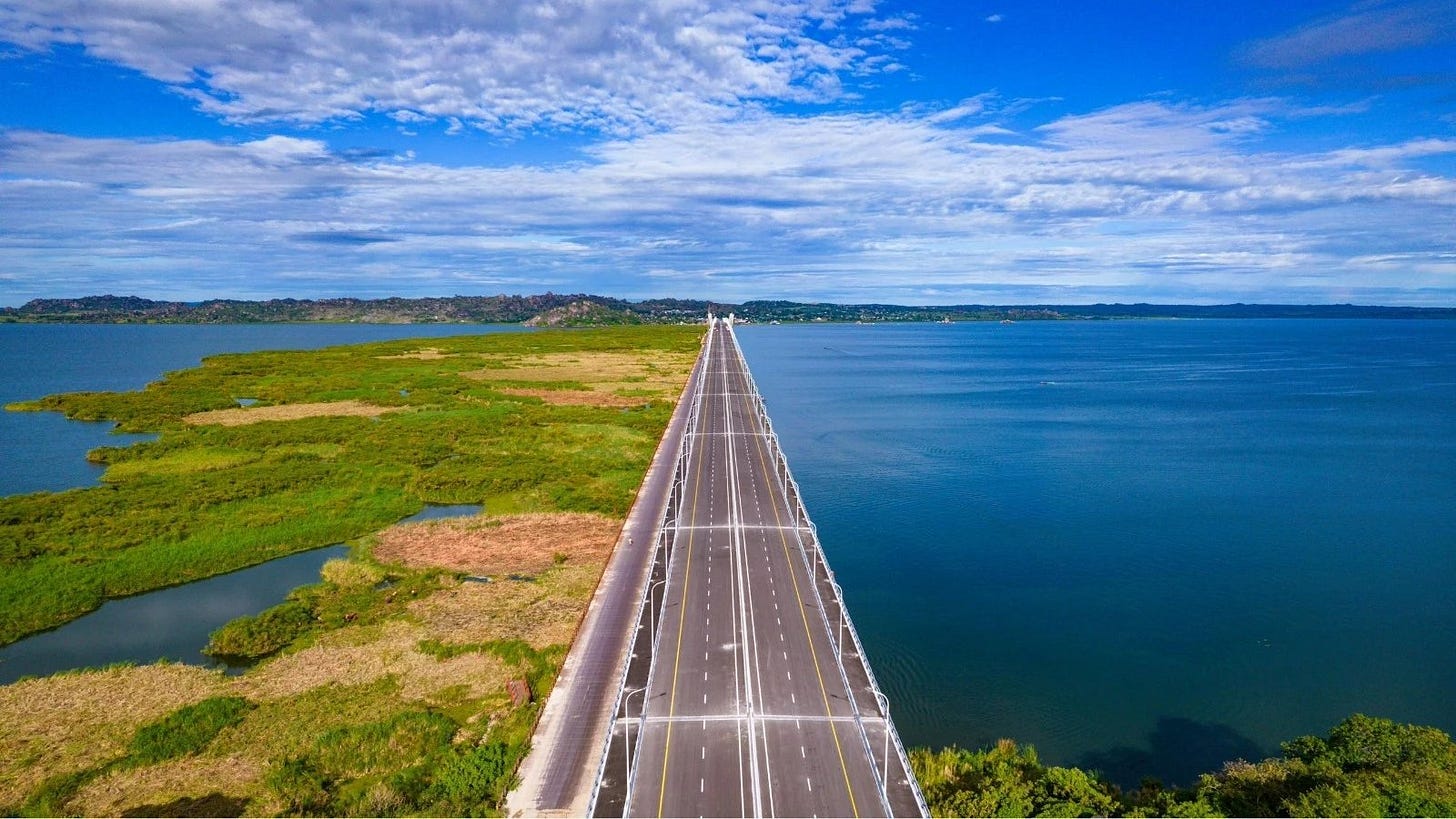Nkrumah's Infrastructure Journal - Week 8
Your weekly continental infrastructure update with three projects being presented for your increased optimism for the African continent and to show the speedy rate of productive physical development.
Project 1.
Name: Cross-border Highway South Sudan-Ethiopia
Where: Paloch (Sudan) - Pagak (Ethiopia)
Type: Highway
Length: 220km
Cost: $738 million USD (Ethiopian Government Financed)
Contractor: Ethiopian Engineers and contractors
Construction start: 2025
Construction end: ?
Significance:
The ministry has said that the project aims to enhance connectivity and bolster economic ties between the two neighboring countries, underscoring the growing cooperation and mutually beneficial relationship between Ethiopia and South Sudan.
Ethiopia will cover the cost of the road project and the the deal designates South Sudan as the borrower and Ethiopia as the financier. The repayment involves trading crude oil from South Sudan to Ethiopia, boosting South-South economic cooperation.
The road will create access to the world market for South Sudan, because it will help it import manufactured goods and export its oil to those markets via Djibouti, which is connected to Ethiopia by a modern railway. Currently, South Sudanese trade flows through Mombasa, which is 1,700km away, making a significant difference in time taken to export and import goods.
During the signing ceremony in May 2023, President Salva Kiir of South Sudan said:
“Our hope is to move together to help one another; this is what our people want to see. This is a strategic project that connects our people and serves their needs.”
Project 2.
Name: Rabat Desalination Plant
Where: Rabat
Type: Desalination Plant
Size and Capacity: 822 million m3 a day or 300 million m3 annually - caters for 9 million people
Cost: $4 billion USD (Est)
Contractor: Veolia (France)
Construction start: ?
Construction end: ?
Significance:
As Morocco suffers its worst drought in 40 years, this has left reservoirs at historically low levels, threatening agriculture, drinking water supplies and more broadly, the country's economy. Seawater desalination is seen as an essential solution as part of the country's energy strategy.
French water specialist Veolia has agreed in principle, to build a desalination plant; the biggest in Africa and the second biggest in the world. The main outline of the deal has Veolia financing, designing and building the plant, and running it for 35 years.
The plant forms part of the Moroccan national energy strategy, launched by King Mohammed VI, which aims to strengthen water supply security and reduce the effects of drought on the country. The deal helps build towards the nation's National Water Plan, agreed in 2020, which set out an investment plan to restore water availability all over the country. King Mohammed VI also allocated an additional budget in support of the National Program for Drinking Water Supply and Irrigation 2020-2027 (a subset of the National Water Plan), which included plans for three new desalination plants.
The 9 million inhabitants, most positively affected by the plant will reside in the Rabat, Kénitra, and Fès regions of Morocco.
The World Resources Institute, ranks Morocco 22nd among countries facing water stress, owing to a combination of scarcity of rainfall, climate change, urbanization and population growth.
Estelle Brachlianoff, CEO of Veolia, told media:
"With a long history of partnership, we are thrilled and honored to write this new page with the Kingdom of Morocco and Moroccan citizens to meet the challenges related to the environment and water. We are fully aware of the urgency of the situation and proud to contribute to this major project, which will strengthen the country's water resilience." - "We will put the best of our international expertise and our long-standing presence in the region at the service of the Kingdom for a reference project in terms of performance and sustainability."
Project 3. - Completion Report
Name: John Magufuli Bridge
Where: Mwanza, Lake Victoria, Tanzania
Type: Highway Bridge
Length + Capacity: 4.7km - incl 520m low-pylon cable-stayed section + 120km/h dual carriageway
Cost: $260 million USD
Contractor: China Civil Engineering Construction Corporation (CCECC) + China Railway 15th Bureau (China)
Construction start: 2019
Construction end + Official opening: 23.05.25 + 19.06.25
Significance:
The John Magufuli Bridge, named after the late great President, who passed just recently in 2021; has been completed. Now recognized as the longest bridge in East and Central Africa; this bridge marks the arrival of a new era for the transport network of Tanzania and East Africa and will significantly open up access to the Lake Victoria region in the west of the country. In addition to the main span of 3km, the project includes 1.66 kilometers of connecting roads, significantly improving regional connectivity.
The Bridge is located in Mwanza, the second largest region by population in Tanzania with an area of 25,233 km2 (9,743 sq mi), of which 13,437 km2 (5,188 sq mi) is water and 11,796 km2 (4,554 sq mi) dry land. Mwanza Region is also home to Ukerewe Island, the largest lake island in Africa, making this region a special one for culture and tourism.
Economically speaking the bridge will cut the travel time for trade cargo and tourist automobiles, on their journey through the region. Cars travelling from Kenya to Rwanda or from Arusha, Tanzania to Burundi, will have a shorter distance and duration to travel and it is because in Mwanza, there is a very large gulf running inland to the south from the lake and it causes a very large detour when travelling the region in general. One must either take a ferry across the gulf or drive over an hour around the gulf to get to the other side, meaning you also must drive away from the lake. With a pedestrian crossing being built alongside the road, this bridge opens up the other side of the gulf to the increase of new townships rising up, while commerce and tourist activities spring up alongside these developments. The population will increase and the people will look to Mwanza as a city to live and work in, with such a magnificent piece of infrastructure to aid their everyday lives. Whether it be in commercial or social activities, the standard and ease of living is greatly increased and all in one of the most beautiful regions of Tanzania.
Finally, this Bridge will soon link up with Tanzania’s new SGR railway network, that is currently on its way to Mwanza. So far, the contractors for the SGR, Yapi Merkezi, have completed phases one and two, from Dar es Salaam to Dodoma. On 1 August 2024, President of Tanzania, Dr. Samia Suluhu Hassan, officially launched the highly anticipated Standard Gauge Railway (SGR) Project and took the first train some 700kms from Dar es Salaam to Dodoma, the new state capital. It was recently announced, that construction on the phase 5 Mwanza–Isaka section, had reached 63% completion and is due to be completed sometime in early 2026. The entire 2000km line, should be operational by 2028 latest and will open up the incredible terrain of Tanzania, like never before!




